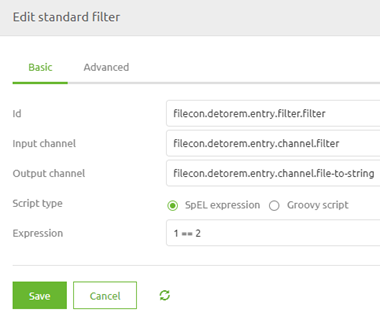Considering the impact of business logic
In this microlearning, we will explore how to evaluate the impact of business logic within your integration solution. We will discuss the role of an eMagiz model in managing data exchanges and protocol transformations, and why incorporating complex business rules directly into your eMagiz model may not always be ideal. Instead, we will guide you on where to best place your business logic to ensure efficiency and clarity. Let’s dive into making the most of your eMagiz model by balancing business logic and integration goals.
Should you have any questions, please get in touch with academy@emagiz.com.
1. Prerequisites
Advanced knowledge of the eMagiz platform
2. Key concepts
This microlearning centers around considering the impact of business logic
- By business logic, we mean: Rules that determine what should happen to a message
The most interesting point when talking about business logic is:
- Where to draw the line?
3. Considering the impact of business logic
In this microlearning, we will learn what you should consider determining the impact of business logic within your integration solution. An eMagiz model is most useful when exchanging data between systems while taking care of data and protocol transformations. For example, an eMagiz model is generally less suited for incorporating business logic as these rules cannot be defined dynamically and are relatively complex. Filling your eMagiz model with a lot of business logic opens you up for a continuous discussion about data and interpretations of business rules. As that is not the core goal of an eMagiz model, you should always ask yourself what the most suitable place is to incorporate pieces of logic.

Invalid check
The most exciting point when talking about business logic is:
- Where to draw the line?
What is acceptable and what is not acceptable in eMagiz then quickly becomes the question. You could argue that any business rule is too much in eMagiz. However, that is a bit too strict of a definition as there are scenarios in which it is pretty helpful to manipulate the destination of messages while transporting them between systems. One example of this would be logic in the asynchronous routing that allows you to develop functionality within the routing and ensure that each piece of the functionality comes with an on/off switch. This way, you reduce problems when deploying and make it clear to all that data can be sent (or not sent) to certain offramps.
Another valid scenario would be to filter messages based on a single criterion to reduce the data load sent to specific systems. For example, when you have one system that sends out employee information that needs to be sent to ten different systems, you could use the messaging pattern and filter out the relevant information in the offramp. However, you could also publish all employee information on a topic, let all those systems consume from it, and do the filtering themselves. Both are possible. The most interesting question in this scenario would be whether it can hurt if all systems access all employee information. If that is the case, then filtering in eMagiz becomes highly relevant suddenly.
On the flip side, you should not implement business logic in eMagiz if the rules consist of multiple criteria and are dependent on other (tables of) information. So gathering all that and making the decision will become so complex that you should consider moving the logic to the business application itself. That way, you reduce the complexity of the integration. This reduces the risks of things going wrong and reduces the time needed to develop and maintain the integration.
The main takeaway should be that adding business logic comes at a price. Depending on the specific requirements, you have to decide whether the pros outweigh the cons. The most crucial part of using business logic is proper documentation. That way, it is clear what the business logic does, why it is there, and how it can be controlled.
4. Key takeaways
- Determine if incorporating business logic directly into your eMagiz model is beneficial or if it should be handled elsewhere. Assess the trade-offs between simplicity and functionality.
- For complex business rules, consider implementing them in the business application rather than in the eMagiz model to reduce integration complexity and maintenance.
- Maintain clear and comprehensive documentation of any business logic included in your eMagiz model. This will help in understanding, managing, and troubleshooting the integration.
- Make informed decisions based on the specific requirements and potential impact on your integration solution.
5. Suggested Additional Readings
If you are interested in this topic and want more information, please check out these links:
